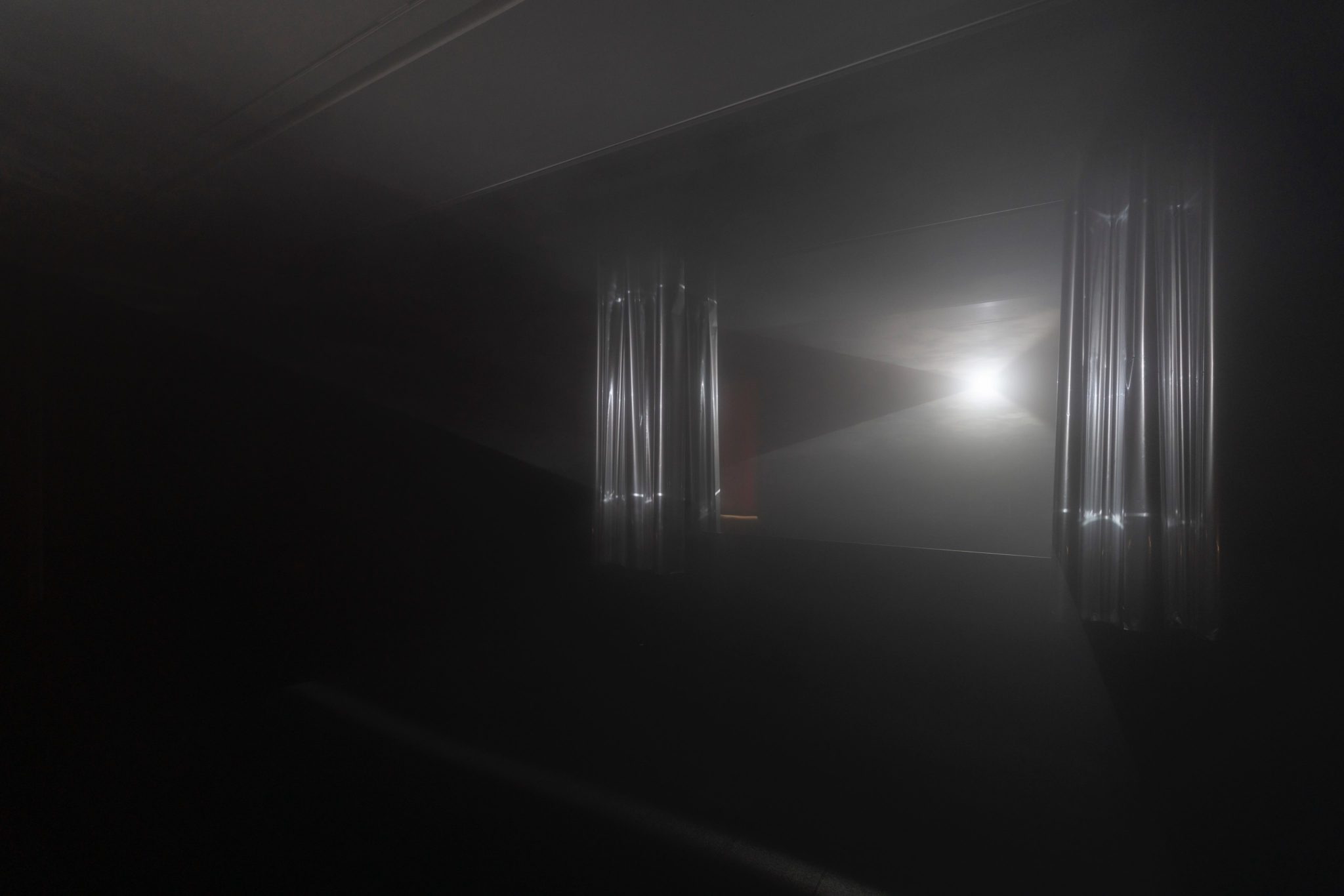Art journalist. Holds a Master’s Degree from Tokyo University of the Arts with a major in Art. Part-time lecturer of the Joshibi University of Art, the Kokugakuin University and the Tokyo University of the Arts. Author of “The Secret of Western Paintings” (Asahi Press Co., Ltd.), and has co-authored many books including “Western Museum”, “Weekly Museum” (Shogaukan Inc.), “History of Nude in Art” (Bijutsu Shuppan-Sha Co., Ltd.), “The Book that helps you Understand Contemporary Art” (Yousensha Co., Ltd.), etc.. Traslator of ” A Concise History of Modern Sculpture ” by H. Read (Gensousha Ltd.), ” Urban Space Art ” by C. Grout (Kajima Institute Publishing Co., Ltd), ” Art & Telematics ” by R. Ascott (NTT Publishing Co., Ltd), ” Leonardo Da Vinci ” by M · Kemp (Otsukishoten), ” But is this art? ” by C .Freeland (Brucke Publishing Inc.) etc..
Bodies turned into screens, movie timematerialized
The first thing the visitor encounters at this exhibition is an object like a round-shaped mirror made of optical glass. When taking a further step inside, one notices a showcase containing two small objects made of metal. One is a group of letters ”Un Chien Andalou,” another one looks like a rear view of two people walking close to each other. In addition, a moth – made of metal as well – is displayed on the wall. All these are motifs taken from Louis Bunuel’s movie ”Un Chien Andalou,” respectively corresponding with the opening title, the sequence immediately before the final scene, and footage of a moth in the second half of the movie. For this work with the title “Film without Film,” three sequences of the movie were digitalized and three-dimensionally materialized with a 3-D printer. The act of giving the flat images of a movie a tangible shape the artists refer to as “the insertion and expression of the literal light form.”
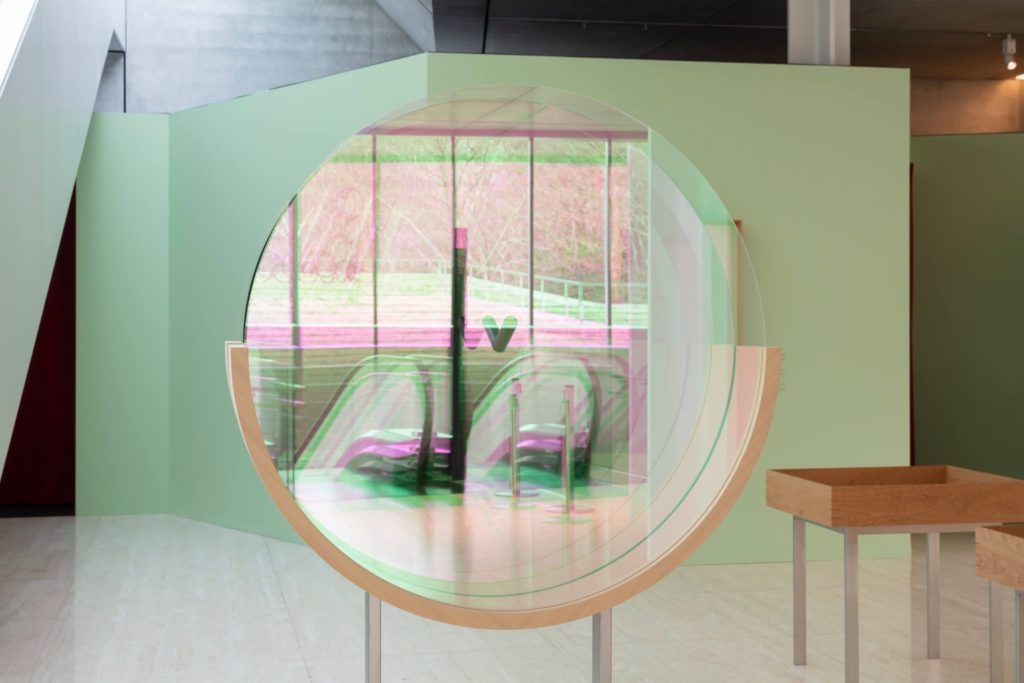
©Ken Kato
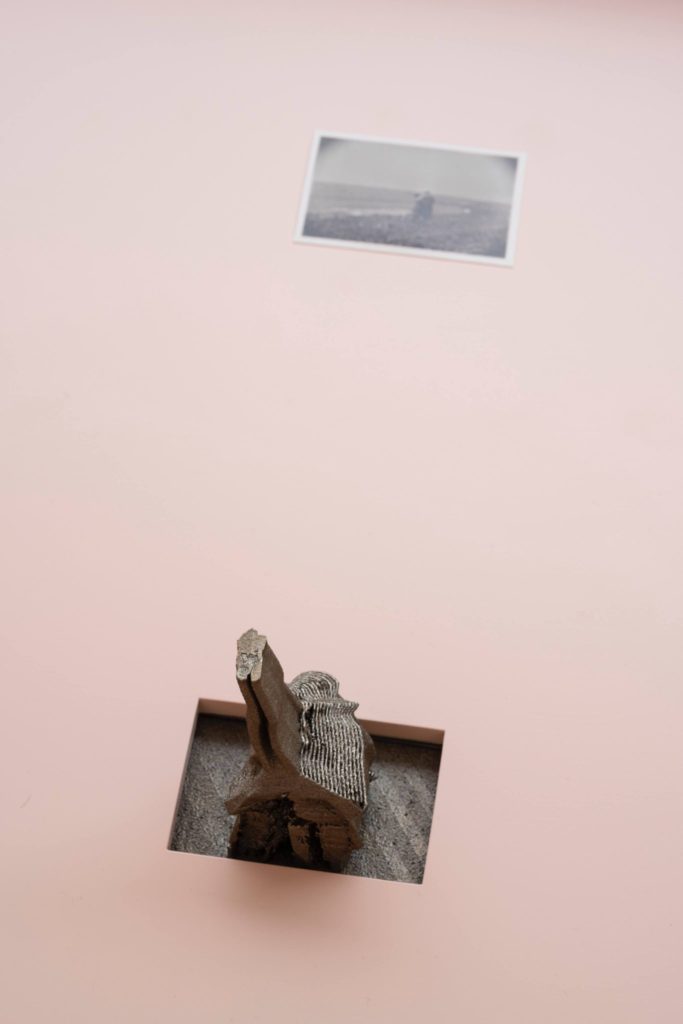
©Ken Kato
”Trace-Sky-Tokyo-Story 03/07,” in which optical glass causes slight color changes and produces multiple images, is based on motifs of the sky and electric wires in Yasujiro Ozu’s “Tokyo Monogatari (Tokyo Story).” This work incorporates hints from display errors in Google Street View. Electric wires in the streets of Tokyo that were erroneously displayed as zigzag lines inspired the artists to question whether “we really see things with our own eyes” in daily life. Day after day, the cameras of news reporters and filmmakers provide us with a flood of pictures and all sorts of movies. The addition of digital technology triggers the odd phenomenon of situations that cannot actually occur being accepted as “reality.” So the artists ask, ”What exactly are we seeing with our own eyes?” The black pole we see in their work is a section of a real electric wire. Here again, images created by light mingle with materially existing objects.
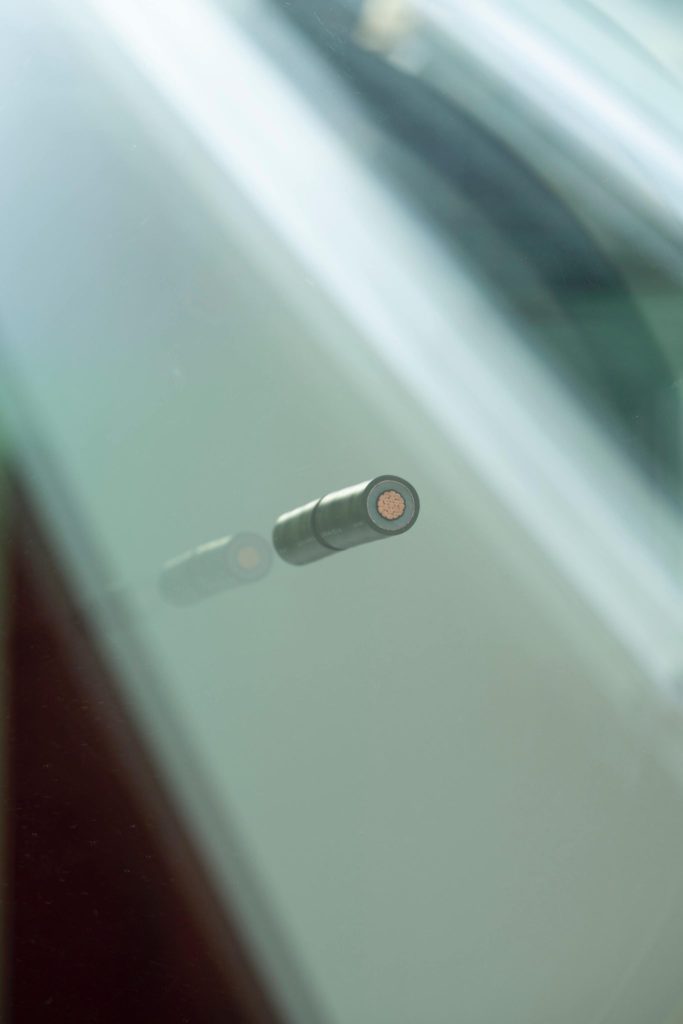
©Ken Kato
The video piece “Silver Screen” (2012, remade in 2018) was inspired by the Lumiere brothers’ movie “The Arrival of a Train at La Ciotat Station.” In this work, mirrors are used to reflect the images of a video projection, while smoke – supposedly of a railway train – fills the room in the form of computer graphics. While visitors at a movie theater watch the screen with their backs turned to the projector, here we face the projector as our bodies stand in the showering light of imagery created by way of mirror reflections. The technique is similar to that of Apichatpong Weerasethakul’s ”Fever Room,” where he used real smoke as a screen, but in contrast to Weerasethakul’s mysteriously illusionary work that took visitors up above a sea of clouds, the work of SHIMURAbros provokes the strange feeling that we are “not the ones who watch,” but we are “the movie itself.” In other words, our eyes and our bodies become a movie screen. Are we the movie? The transition from the watched object into the watching subject occurs in the moment when glittering rays of orange light hit the retina in the final scene. This sequence of shots of sparklers is what pulls our body back into reality. While feeling relieved, this moment lets us at once enjoy the sorrow of parting that vaguely hangs in the air.
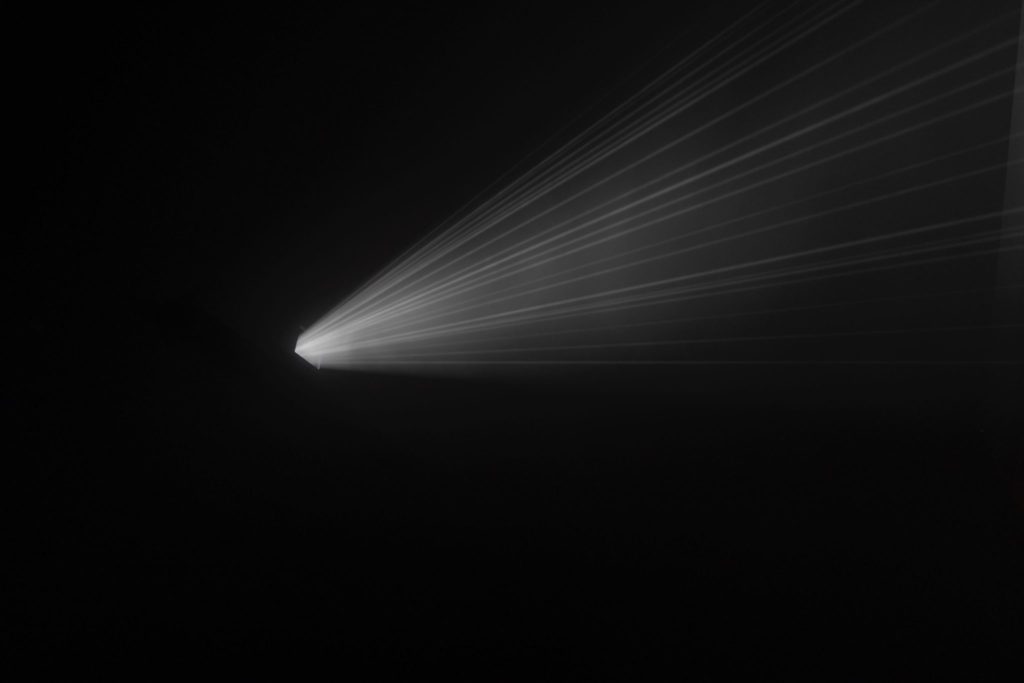
©Ken Kato
If the works in Hiroshi Sugimoto’s ”theater series” are visualizations of the running times of movies, what SHIMURAbros did here can probably be referred to as materializing the times inherent in movie sequences. Their work leads us into a pleasant creative environment that is at once intellectually stimulating and physically stirring.
Translated by Andreas Stuhlmann
INFORMATION
SHIMURAbros "Film without Film"
2018.12.8-2019.3.17
Atrium Gallery, Pol aMuseum of Art
SHIMURAbros HP


